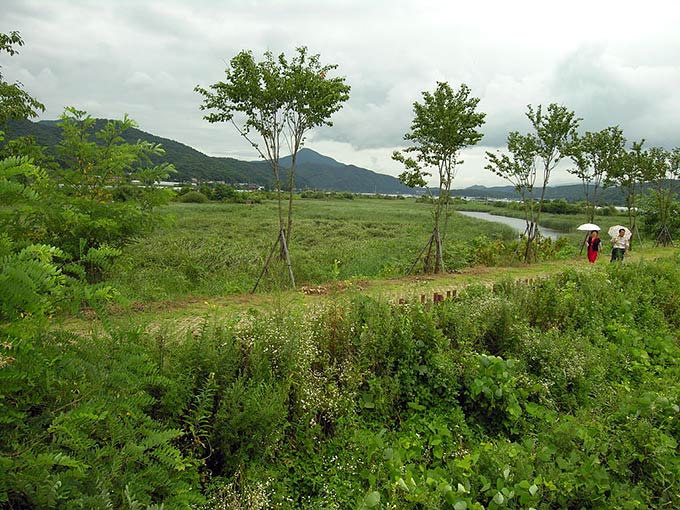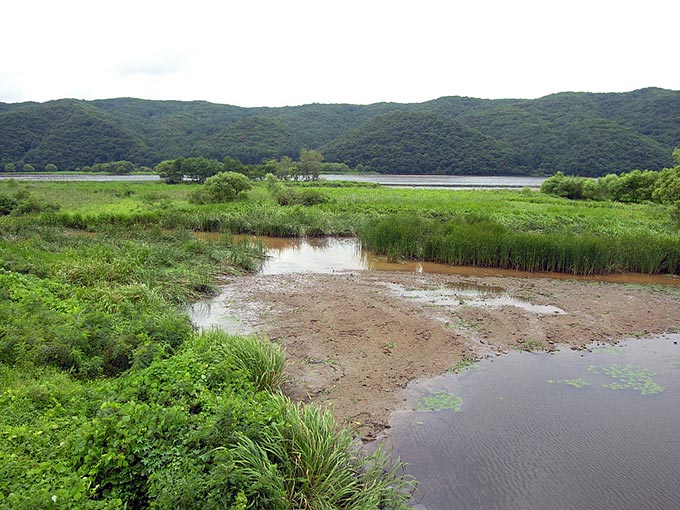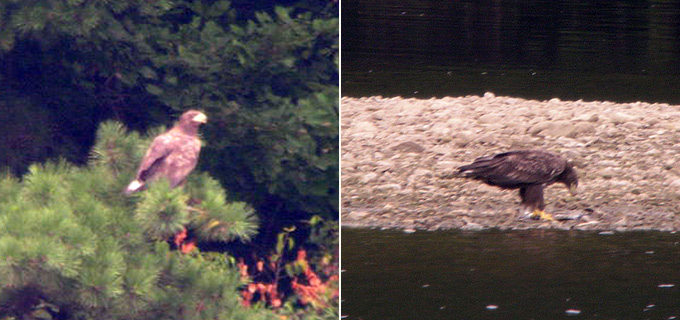 | E-mail to Birds Korea |
 | KWBS |
in the Region
 | The Oriental Bird Club |
 | BirdLife International (Asia) |
August
Typically hot and humid (with day maxima often around 30°C until at least mid-month), with occasional heavy rains and strong winds, associated either with southern typhoons or caused by the mix of humidity and heat.
Chinese Egrets become widespread along the west coast. Shorebirds (including a very small number of Spoon-billed Sandpiper) begin to build up at a few of the remaining best sites. Numbers tend to be rather lower than in spring, though Kentish Plover and Terek Sandpiper often number in the thousands in the southwest.
Parties of Black-naped Orioles, the appearance of returning leaf warblers (especially Eastern-crowned and Arctic Warblers) and small numbers of Brown Shrike and Yellow-rumped and Brown Flycatchers by mid-month also hint at the start of passerine migration, while Eurasian Hobby appear to be on the move by the month’s end. At the very end of August, the first migrant Pechora Pipit (most likely of the subspecies menzbieri) and early migrant buntings also appear on offshore islands. August national rarities include Common Ringed Plover, Sooty Tern, House Swift, Black Tern and Lesser Frigatebird. National firsts since 2000 have included Sooty Shearwater in 2002, and Aleutian Tern and Great Frigatebird in 2004.
(The following records are a compilation of our own sightings and records sent in by other observers. As well as being posted on the Birds Korea website(s), selected records are also forwarded to other Korean-language birding websites; records of threatened species are arranged and forwarded to Birdlife International and national authorities when appropriate; flag images and records are passed to bodies responsible for their coordination throughout the flyway; and all records sent to us are used to compile annual reports and to support the evolving understanding of the status of many of Korea’s birds.)
Incheon-Socheong-Incheon Ferry, August 31
With fairly calm seas and under warm sunshine, seawatching from the ferry. In addition to c20 Swinhoe’s Storm Petrel in total, 966 Common Tern on the outward leg, and 761 on the return leg, one possible and one presumed Aleutian Tern by NM only (with the latter individual dark grey, with a white forehead, a dark eye-line, some dark on the secondaries, and more extensive dark across the primaries), at least 277 Streaked Shearwater on the return leg, and three or four Flesh-footed Shearwater and three Pomarine Skua on both crossings.
Geojin Area, Gangwon, August 30
A long drive out to the NE coast, in order to avoid the rain and to search for Swinhoe’s in the East Sea. From the headland in Geojin in 20 minutes of scanning, a group of Common Tern and probably several hundred Streaked Shearwater were seen heading south within 7km of shore - so a boat was charted, chum was prepared, and then dispensed c8 km offshore. With the dropping wind, the number of birds fell away rapidly, though still included c100 Streaked Shearwater in total, and a single Flesh-footed Shearwater. Also intriguing was a medium-sized cetacean seen breaching - though distance prevented a firm id.

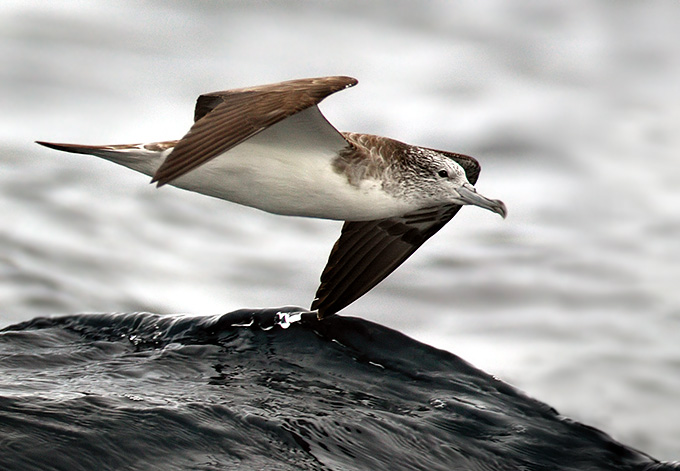
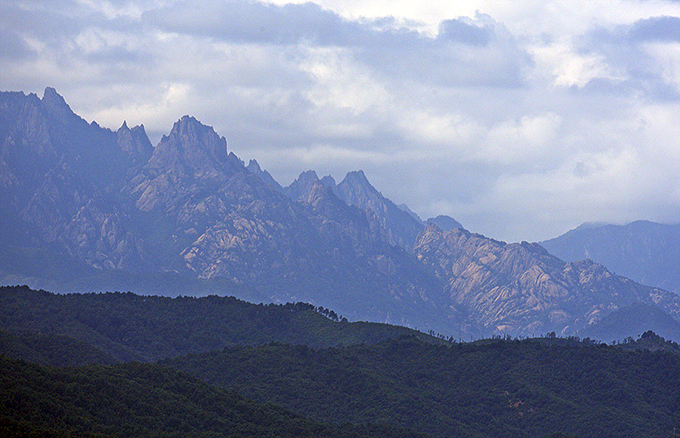
Eocheong AM-Eocheong-Yeon Do-Eocheong-Gunsan, August 29
On Eocheong itself, rather few migrants and lots of construction work, including the destruction of much of the area known as the gardens - used both by breeding Styan’s Grasshopper Warbler and formerly by large numbers of migrants. Species of note included Chinese Grosbeak (1), Richard’s Pipit (1) and half-a-dozen Arctic Warbler, along with single Chestnut and Yellow-browed Buntings heard. On Yeon Do, a Richard’s Pipit, three or more Arctic Warbler, three Chinese Grosbeak and a Chinese Egret were the only species of note. From the ferry, very few seabirds, but these included one Flesh-footed Shearwater and prolonged looks at a Swinhoe’s Petrel, flying at one stage within 90m of the boat.
Sokcho Beach, August 29
Despite the start of a dark stormy morning, I think several highlights are worth mentioning: 6 Common Tern, 8 Daurian Redstart (patrolling near a military lookout point), 2 Red-necked Stint, and a mixed flock of Mew & Black-tailed Gull.
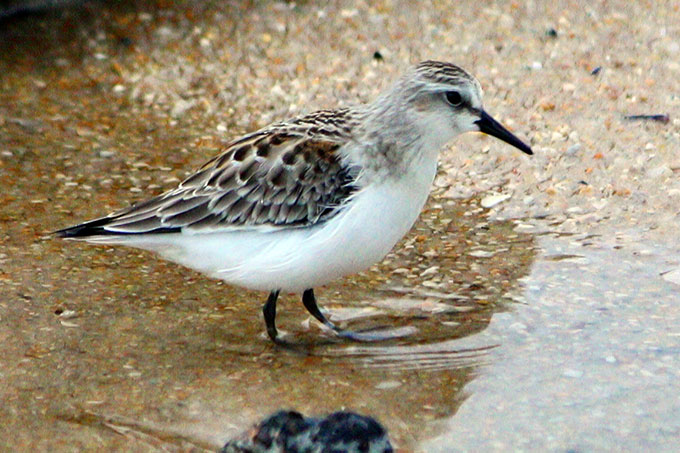
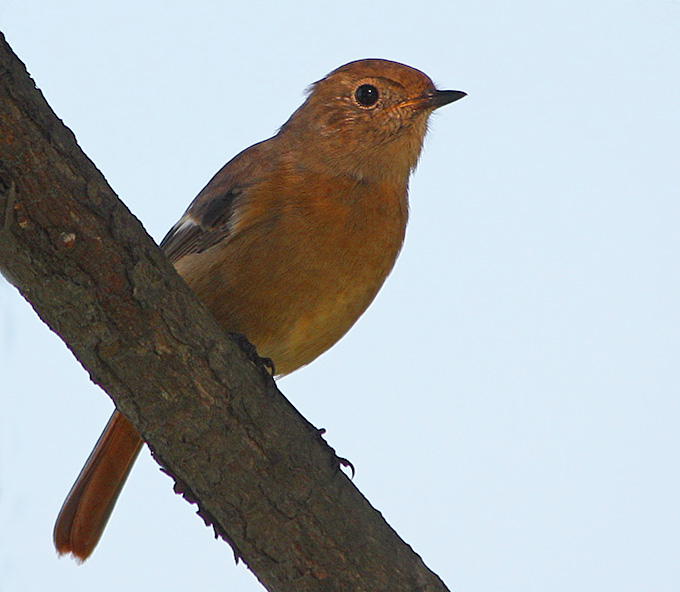
Gunsan-Eocheong and at sea off Eocheong, August 28
Very poor from the Eocheong ferry, with only 7 Streaked Shearwater, 10 Red-necked Phalarope and three Common Tern. Unfortunately sea conditions were too poor to take out the Yangji Boat (as had been prearranged), so a larger boat was found. Around 8 km west of Eocheong, in a heavy swell and strengthening northerly winds, no petrels, but along with small numbers of Red-necked Phalarope, four birds identified largely on structure as Red Phalarope (with plumage suggesting these were three adults moving into non-breeding plumage, and a juvenile).
Yeongnang, August 28
This lake was by far (with both my wife and I, by agreement) the best part of our little journey here to Sokcho. After walking the whole circumference, highlights were: 1 Eurasian Kestrel (being severely hounded by an aggressive Barn Swallow); 1 lone Tufted Duck and a close view of a juv. Daurian Redstart. There were also more of the common species previously mentioned.
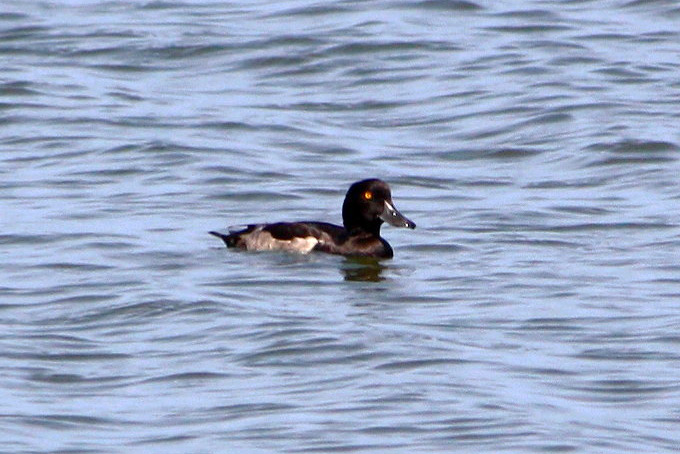
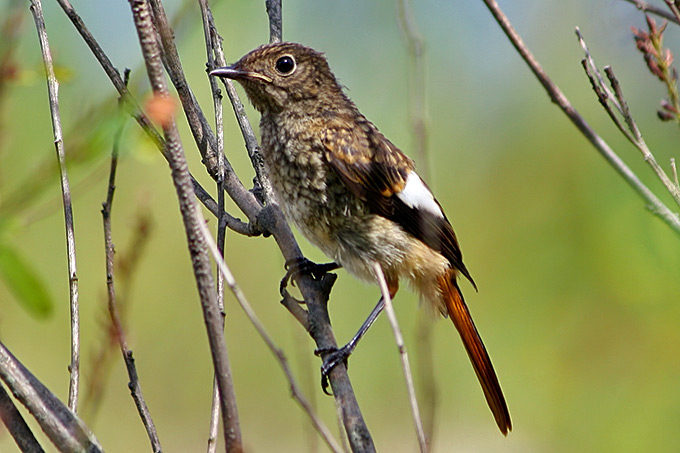
Mokpo-Heuksan, Heuksan-Mokpo, August 27
The start of a week-long quest to learn more about Swinhoe’s Storm Petrel at sea… With high waves at sea off Eocheong, the ferry instead to Heuksan and back in rather overcast conditions, with waves of 2-3m falling to 1-1.5 m on the return leg. In all, c20 Swinhoe’s Storm Petrel observed, along with c. 50 Red-necked Phalarope.
Cheongcho, August 27
All was relatively quiet on the waterfront with plenty of Black-tailed Gull, Great Cormorrant, Grey Heron, Spot-billed Duck, and an even number of Great and Intermediate Egrets. Highlights here included: 2 Black-capped Kingfisher, 3 Common Kingfisher, 2 Artic Warbler, 1 Oriental Reed Warbler, and a playful family of Daurian Redstarts.
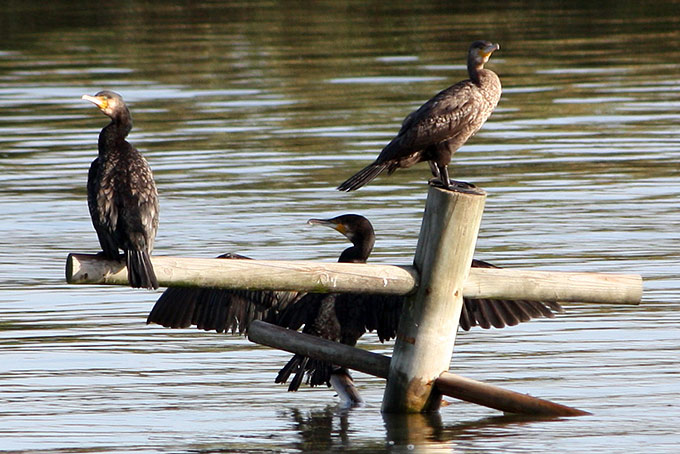
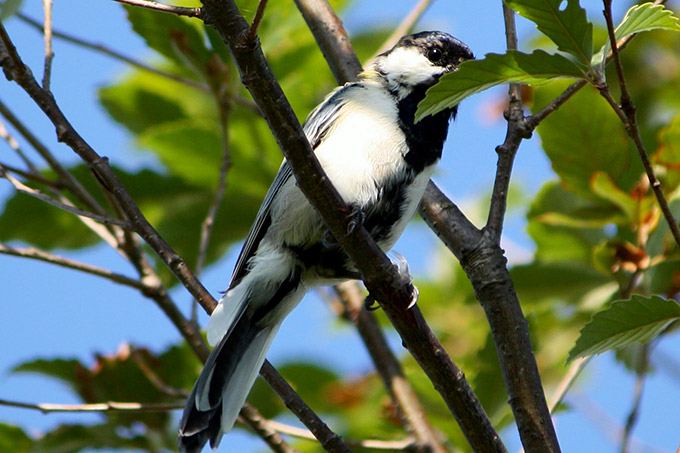
Yeongjong Island, August 25
Today seemed like a nice day to hit some of the beaches and 'natural' surroundings of the western section of Yeongjong. Highlights were as follows: 150 Barn Swallow, 300+ Black Tailed Gull, 28 Temminck's Stint, 4 Common Kingfisher, and 8 Long-tailed Tit (including 1 caudatus). Other species of note were: 1 (juv) Black Naped Oriole, 8 Whimbrel, 2 confiding Oriental Great Reed Warbler, 24 Grey Capped Greenfinch and 2 White Wagtail (leucopsis).
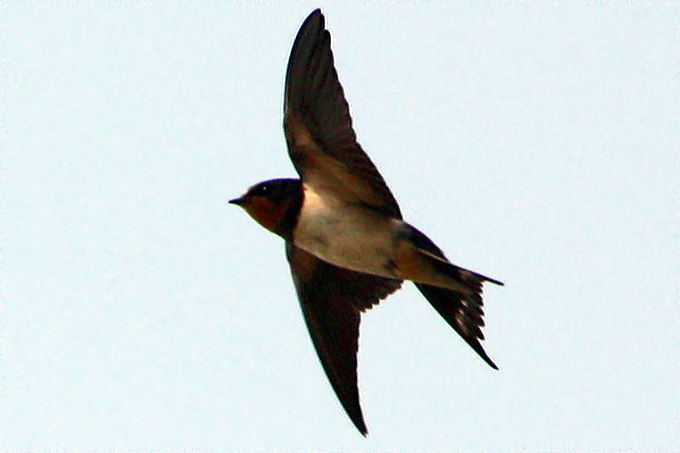


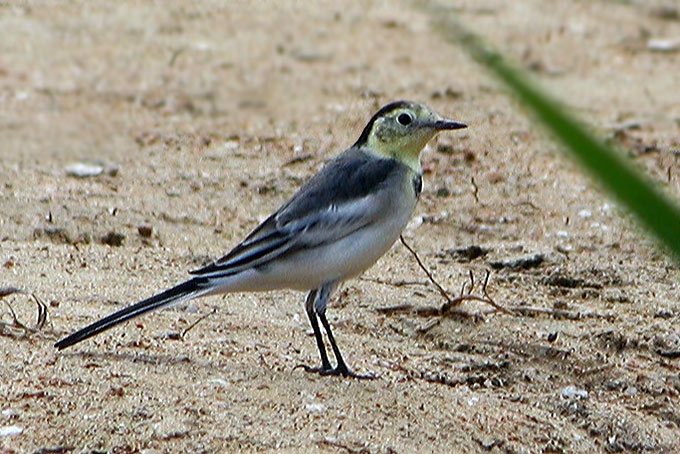
Yanggu Wetlands, August 25
A survey of birds along the river and the new artificial wetland (Paro Wetland) produced a couple of interesting records on August 25. There 6 Red-necked Stints feeding in the shallow water flowing over one of the weirs. On one of the boardwalks in Paro Wetland, there were more than 200 Barn Swallows.

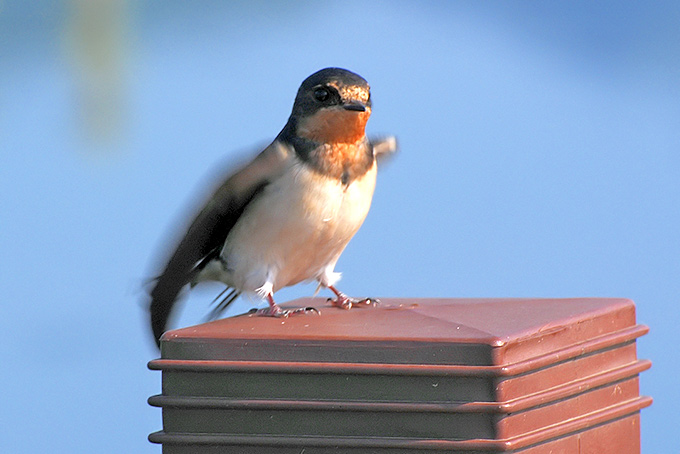
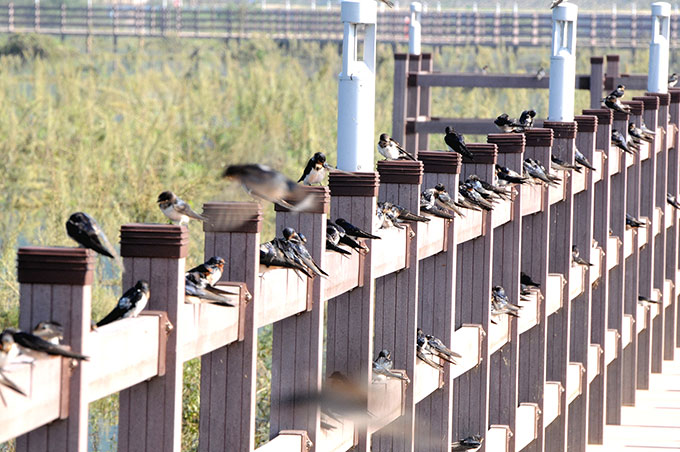
Yanggu, Yangyang & Sokcho wetlands and surrounds, August 23
Yanggu, 21 August 2009, saw that most of the egrets had left the breeding site with numerous Little Egrets and Eastern Great Egrets seen along the river. The number of Mandarin Ducks was up, with a premigration concentration of this species coming up. There were 12 Wood Sandpipers flying over the flooded artificial wetland.
At Namdae Cheon, 22 August 2009, there were several species of migratory birds. Most were seen behind the sand bar at the mouth of the river. Species included Grey Plovers, Mongolian Plovers, Red Knots, Whimbrels, a Sanderling, Dunlin, Wood Sandpipers, Black-headed Gulls and an Osprey. There was also a Chinese Egret, a Little Egret and Eastern Great Egrets in the same area. When the Osprey flew over it disturbed the 250 Black-tailed Gulls, Grey Herons and Great Cormorants resting behind the sand bar.
In Sokcho at Cheongcho Lagoon, there were more Black-tailed Gulls, Great Cormorants, Grey Herons and Spot-billed Ducks. One of the Great Cormorants appeared to be injured.

right Red Knot Calidris canutus, Photo © Barry Heinrich
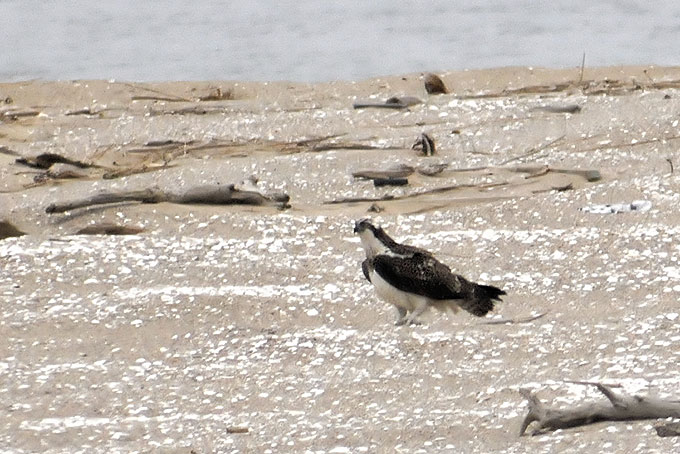

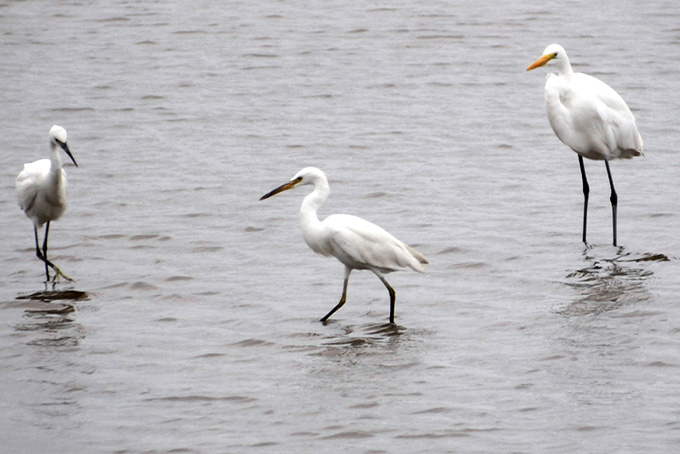
right Eastern Great Egret Ardea modesta, Photo © Barry Heinrich

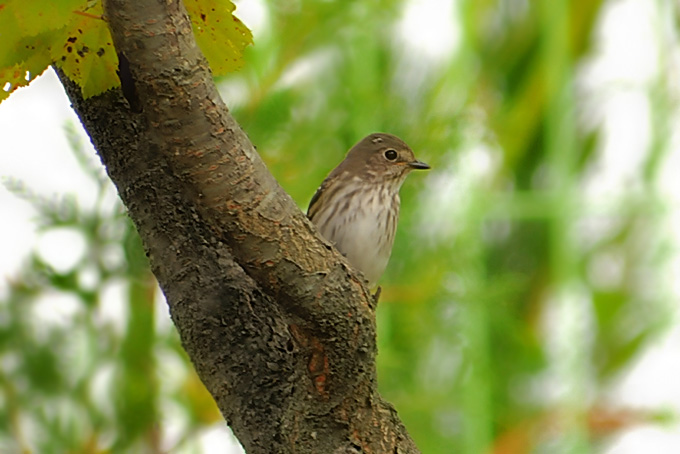
Socheong AM, Ferry to Incheon PM, August 22
An excellent early autumn day’s birding, with light overcast at dawn, and 48 species recorded by midday. The arrival included a Swinhoe’s Snipe, the personal first Lanceolated (1) and Pallas’s Grasshopper Warblers (1), Common Rosefinch (3), Chestnut (1), Yellow-breasted (2) and Yellow-browed Buntings (c5), and White Wagtail (4 leucopsis) of the autumn, as well as a single Ruddy Turnstone, at least 10 Brown Shrike, a Daurian Starling and three Common Tern – the last species apparently a first for Socheong. From the ferry, fewer Swinhoe’s Storm Petrel (only 20) than on the 19th, but 51 Common Tern, and single Great Knot, Flesh-footed Shearwater and a dark shearwater sp (Slender-billed?) as highlights.
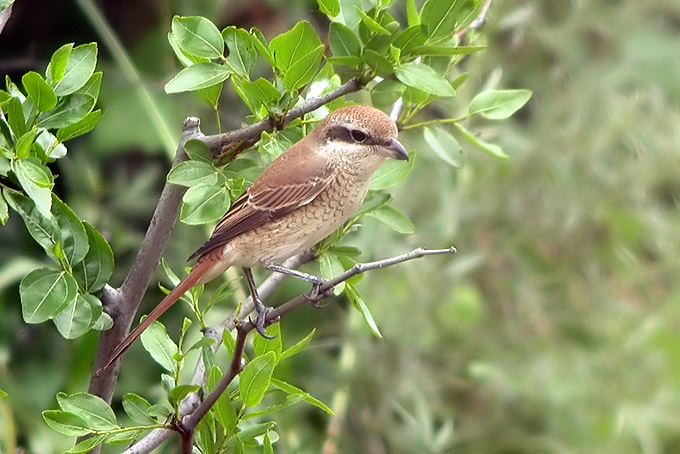
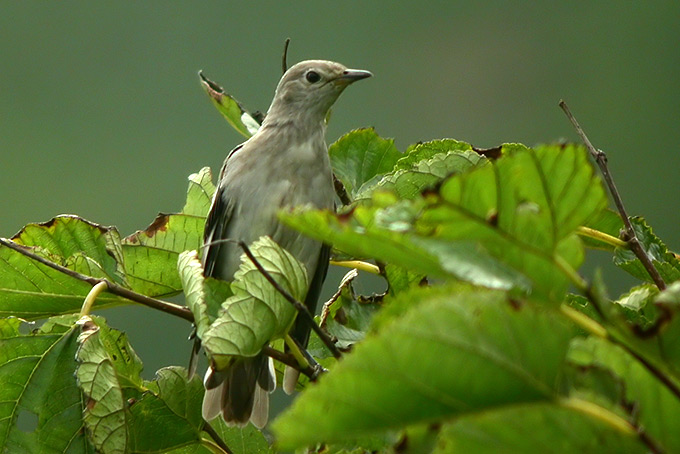
Yubu Island, August 21
Highlight of the excursion of the National Shorebird Network to Yubu island were 2 Spoon-billed Sandpiper.
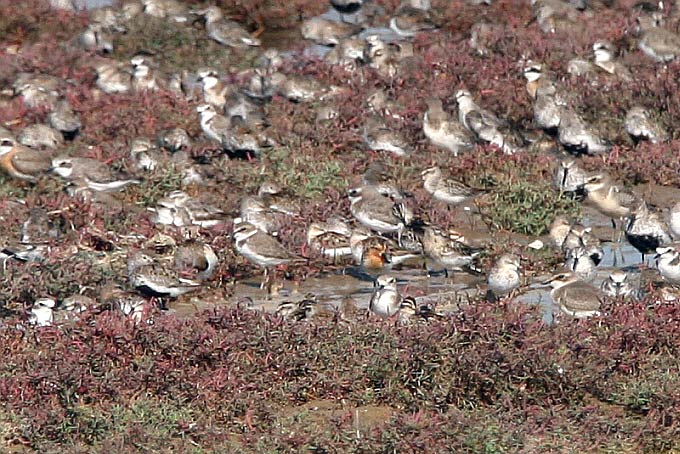
Socheong, August 21
Coverage limited to the afternoon, and only 28 species logged. However, these included the personal first Striated Heron (1-4), Thick-billed Warbler (3) and Siberian Stonechat (1) of the autumn, as well as 3200 Streaked Shearwater off island and a presumed Little Whimbrel heard after dark.
Socheong, August 20
After early morning rain, followed by clearing skies and a moderate (Force 4) northerly, full coverage of the west of the island. Few species of note, including the personal first Richard’s Pipit of the autumn, single Forest Wagtail and Black-capped Kingfisher, two groups of Meadow Bunting (including some very worn adults and several much fresher-looking juveniles!), six Brown Shrike (including both juvenile cristatus and lucionensis/confusus) and at least three Light-vented Bulbul at Fishfarm. Of further interest, while the number of Black-tailed Gull has declined considerably since last month, the number of juveniles (none of which were fledged on the island) has increased greatly – with 169 counted in total.

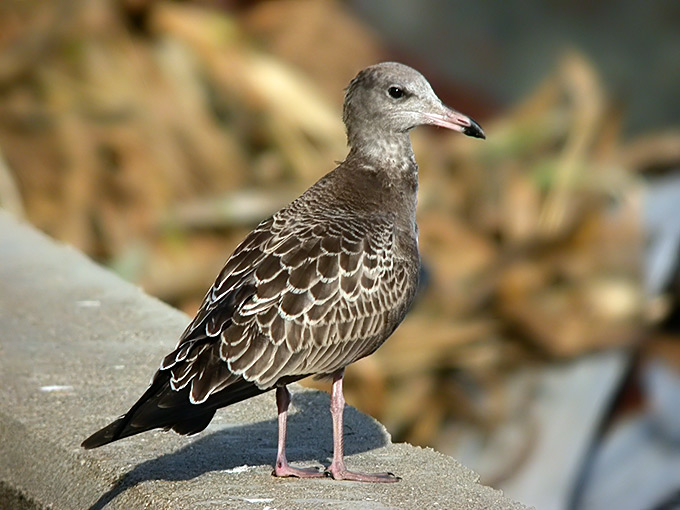
Incheon-Socheong Ferry and Socheong, August 19
Under mostly overcast skies with a strengthening SE wind reasonable seawatching, with 85 Streaked and 2 Flesh-footed Shearwaters, 54 Swinhoe’s Storm Petrel (some watched long-gliding, for probably 50 m or more, with two flying more actively to keep steady with and then overtake the boat, therefore flying at more than 47kph), 9 Red-necked Phalarope and 13 Common Tern, all but one still in full breeding plumage. On the island itself, occasional thunder and rain showers. Not many birds in evidence in the East of the island (perhaps because the island has been largely hidden by fog and mist for several days?), with species of most note confined to single Forest Wagtail (the personal first one of the autumn) and one or two Western Osprey, six Yellow-rumped and two Dark-sided Flycatchers.


Mokpo Namhang Urban Wetland, August 16
The visit to the site in the early morning revealed not only active birds but also many active anglers at the site. The natural tidal area was almost completely filled by the tide that only a few Common Sandpiper and Eastern Great Egret along with 3 Ruddy Turnstone found a place. One Oriental Reed Warbler appeared very briefly in a very small patch of reed. The wall enclosed lagoon beside the tidal flat was populated by c. 60 Eastern Great Egret, 30 Grey Heron, a few Little Egret, 13 Whimbrel and c. 120 Common Greenshank. The Common Redshank seen on several days before couldn’t be found. Also seen were 6 Long-billed Plover, 5 Ruddy Turnstone, some more Common Sandpiper and 2 Grey-tailed Tattler. The highlights in the part of the site which holds a large reedbed were two Common Kingfisher and also 1 Common and 1 Green Sandpiper prowling around a small puddle, all seen from close range.

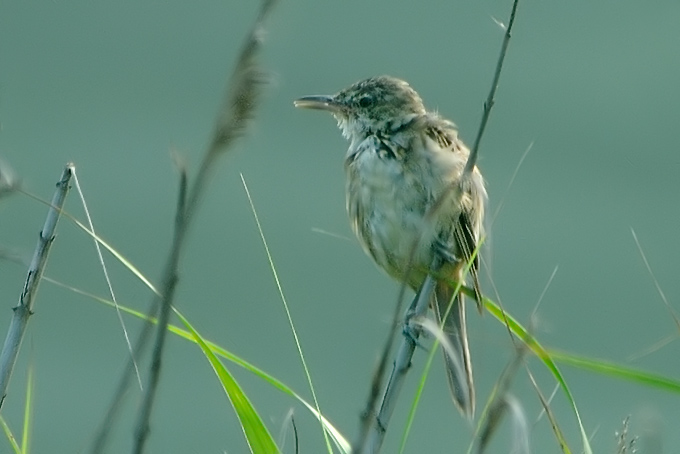
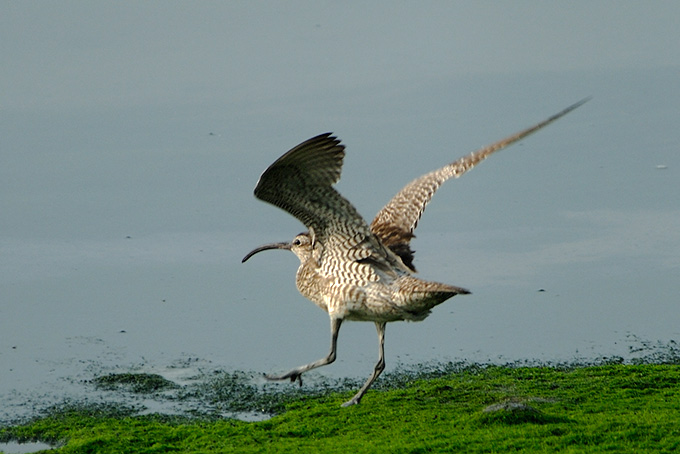


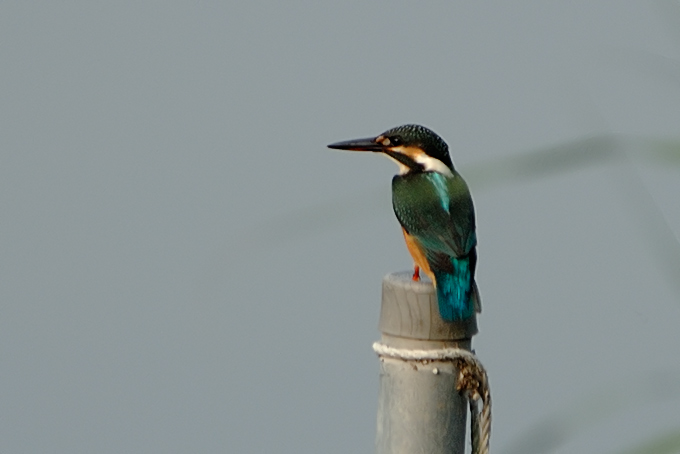
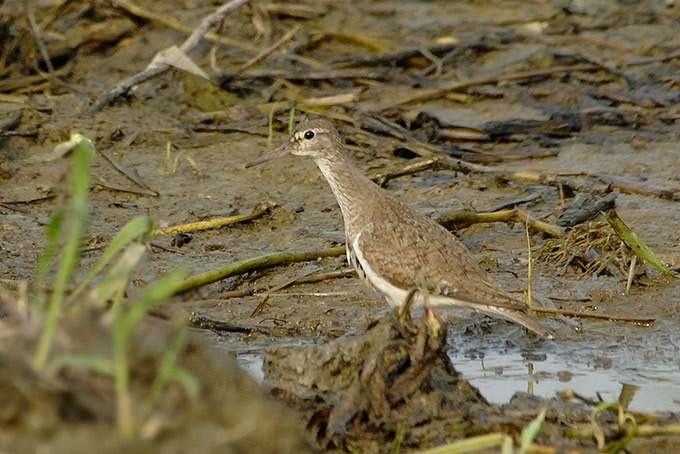

Gageo Island, August 16
An especially gruelling day, with an 11-hour hike under a blazing sky, with high humidity and temperatures reaching 30C, through 3-Gu (where a new road and a car park is planned...even though the half-dozen families living there have no car), to the lighthouse, 2-Gu and back to 1-Gu. In total about 26 Black Woodpigeon, probably 4 juvenile and several adult Styan's Grasshopper Warbler, and the personal first Grey Nightjar (1), Oriental Dollarbird (1), Brown Shrike (1) Pale-legged Leaf/Sakhalin Leaf Warbler (1) and White-throated Needletail (3) of the autumn. Other species of note included Light-vented Bulbul, with 2 juveniles in 3-Gu and an adult plus an unseen individual in 2-Gu, the Long-toed Stint still and c100 Pacific Swift in the evening.
Gageo Island (including Gughul Islet), August 14
After a chance meeting in 1-Gu on the 13th, a trip out to the National Natural Monument Island of Gughul (Gugul Islet) in the morning with a documentary team from EBS. The island was designated a National Monument in order to protect the nesting seabirds, which include Streaked Shearwater, Swinhoe’s Storm Petrel and (at least formerly) Crested Murrelet, and landing is only possible by special permit. The team had the permit, for landing and to film Swinhoe’s Storm Petrel, but no special knowledge or experience of this extremely sensitive species or of seabird colonies in general. I was therefore invited to join them, with the twin aim of rapidly assessing the condition of the site, while helping them to film without causing any undue disturbance. Fortunately, two nests were found almost immediately; the birds were filmed sensitively and briefly (a minute at each nest, with no flash and in silence, standing back), and the team (the PD, camera staff and myself) withdrew carefully and quietly back to the landing point. Also there were a Pacific Reef Egret, and a flock of c20 Pacific Swift. The return back to 1-Gu by boat was by way of the eastern coastline, where also single Chinese Egret, Common Kingfisher and Grey-tailed Tattler were seen (all autumn firsts for the island), while in 1-Gu there was another Grey-tailed Tattler, the personal first Yellow-rumped Flycatcher of the autumn, and now apparently two Daurian Starling. It would be very helpful to learn from those with experience of identification, aging, and sexing (if possible) of juvenile and moulting Daurian and Chestnut-cheeked Starlings. The new Birds of East Asia only states "Juv. Daurian and Chestnut-cheeked very similar, but former usually has white scapular bar and pale tips to tertials". Is the presence/absence of warm brown or rust-tinged bases to the primaries a (more) reliable feature in juveniles?
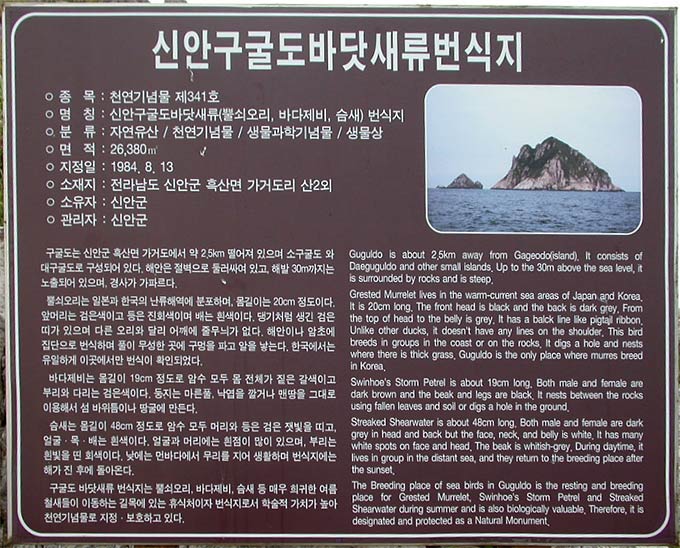
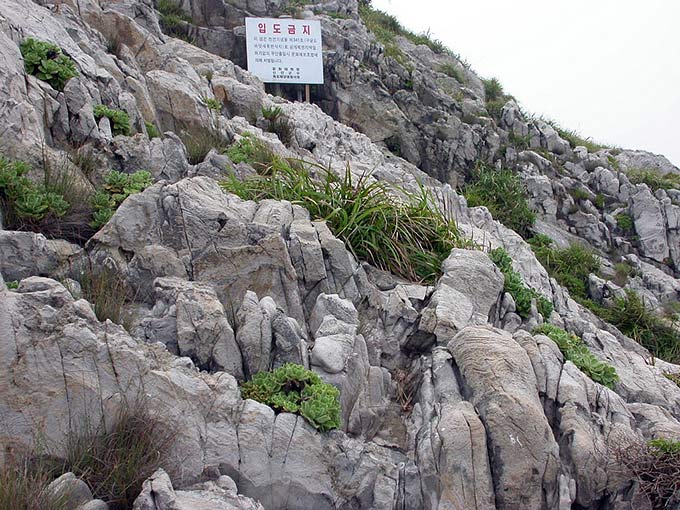
Photo © Nial Moores
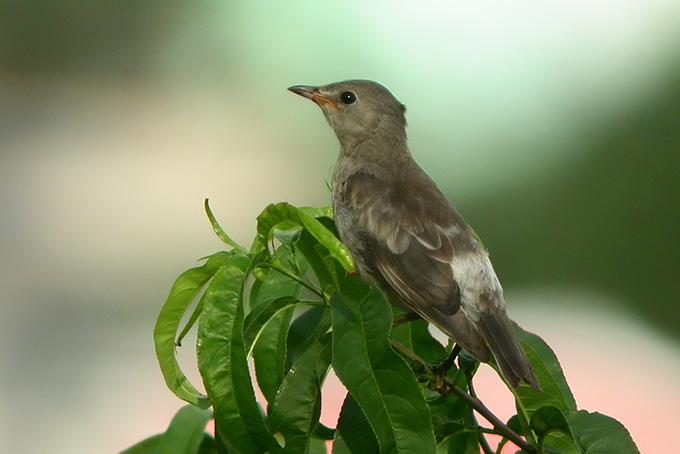
Very similar to a juvenile Chestnut-cheeked Starling photographed in Mokpo on August 18th 2008 (see: http://www.birdskorea.org/Birds/Birdnews/BK-BN-birdnews-2008-08.shtml)

Photo © Nial Moores
Mokpo Ferry-Gageo Island, August 13
From the ferry in sweltering humidity (probably reaching 30 C, with patches of fog!), and with sea-swell between 1 m and 2.5 m only small numbers of birds, but these included 21 Swinhoe’s Storm Petrel (including one medium-range individual that again seemed to show white rump sides...), one Flesh-footed Shearwater and one dark shearwater sp. On the island itself, limited time spent walking the 1-Gu circuit in the late afternoon, following 2 or 3 days of rain, suggested that autumn really is here...with at least five snipe (identified tentatively as two Pintail and two Swinhoe’s Snipes with one apparently larger, paler bird), a Long-toed Stint and a Marsh Sandpiper, single Chinese Grosbeak, what appears to be a young juvenile Daurian Starling (based on the rusty wing panel) and 4 Eastern Yellow Wagtail all personal firsts of the autumn. In addition, there were at least 3 Styan’s Grasshopper Warbler in song, a Black Woodpigeon was seen near the power station, and the evening sky contained a mixed flock of 80 Barn and 2 Red-rumped Swallows, and c 10 Pacific Swift.

Gwongchonshubji, August 8
The location is about 10km from Paldang Dam (by Road) on the eastside of the mouth of the Gwonganjin river (just south (1K) of the Gwangdong bridge). It’s called the Gwongchonshubji environmental park.
It's a busy place with many Oriental Reed Warblers, Bush Warblers, Yellow Bitterns, Brown and Bull-headed Shrikes, suspected snipes plus the usual Heron, Egrets, Coots, Waterhen, Black-crowned Night Heron, etc. a large Great Cormorant roost (shown in one of the pictures as whitish trees lining the other side of the river, which I'd guess provides accommodation for ~1000 birds). Also, a flock of Azure-winged Magpies (50-70), which managed to raise a suspected male Merlin. The park is only about a couple of square Km, but it has an elevated walkway (a dike) that offers good vantage points over the park and the surrounding countryside, which include the river with what appears to be a 100% wild bank on the other side, a series of raised wooden walkways over the reedbeds (not shown), and around half a dozed decent wooden bird watching screens. It's best in the morning or late afternoon, because it's also popular with Korean photographers during the day.
Also, as the pictures show, we bumped into a juvenile White-tailed Eagle again (last year I spotted one at Paldang dam - in May). The bird had the white tail, but it was ~50% by area brown on its upper surface (curiously the underside of the tail appeared white, but we were 500+meters away). It seems to have forsaken the northerly migration for easy pickings in the river - as the temperature increases the fish become lethargic and head for the surface to gulp air. On the other hand, his dress is wholly incompatible with 300C+ and humidity off the chart, and he spends an indecent amount of time, like the fish, gasping for air.
